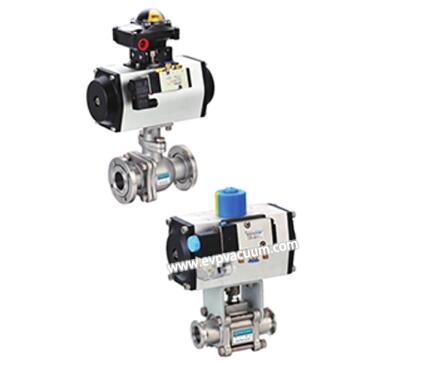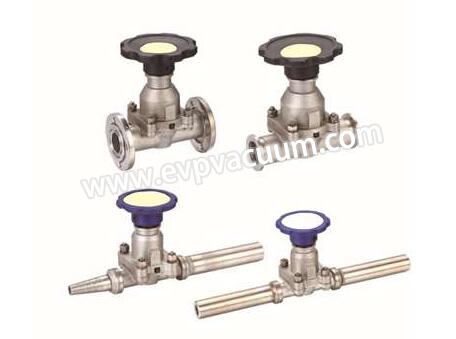vacuum valve pressure test method
Generally, the strength test is not required for industrial valves in use, but the valve body and bonnet after repair or the valve body and bonnet damaged by corrosion shall be tested. For the safety valve, its constant pressure, return pressure and other tests shall be in accordance with the specifications and relevant regulations. Before valve installation, valve strength test and valve sealing test shall be conducted on valve hydraulic test bench. 20% of the low-pressure valves shall be sampled, and 100% inspection shall be conducted if the valves are unqualified; 100% inspection shall be conducted for medium and high-pressure valves.
The commonly used media for valve pressure test include water, oil, air, steam, nitrogen, etc. the pressure test methods for various industrial valves including pneumatic valves are as follows:
1. Pressure test method of stop valve
For the strength test of stop valve, the assembled valve is usually placed in the pressure test frame, the valve disc is opened, the medium is injected to the specified value, and the valve body and valve cover are checked for perspiration and leakage. The strength test can also be carried out on a single piece. The sealing test is only for stop valve. During the test, the valve stem of the stop valve is in a vertical state, the valve disc is opened, the medium is introduced from the bottom end of the valve disc to the specified value, and the packing and gasket are checked; after passing the test, the valve disc is closed and the other end is opened to check whether there is leakage. If both strength and sealing tests of the valve are required, the strength test can be conducted first, and then the pressure shall be reduced to the specified value of the sealing test, and the packing and gasket shall be checked; then the valve disc shall be closed and the outlet end shall be opened to check whether the sealing surface is leaking.

2. Pressure test method of ball valve
The strength test of pneumatic ball valve should be carried out in the half open state.
① Sealing test of floating ball valve: put the valve in half open state, introduce test medium at one end, and close the other end; turn the ball several times and open the closed end to check when the valve is in closed state, and check the sealing performance of packing and gasket at the same time, and there shall be no leakage. Then introduce the test medium from the other end and repeat the test.
② Sealing test of fixed ball valve: before the test, rotate the ball without load for several times, and the fixed ball valve is in the closed state, and the test medium is introduced from one end to the specified value; the sealing performance of the inlet end is checked with a pressure gauge, and the accuracy of the pressure gauge is 0.5-1, and the range is 1.6 times of the test pressure. If there is no depressurization within the specified time, the test medium is introduced from the other end and the above test is repeated. Then, the valve is in half open state, both ends are closed, and the cavity is filled with medium. Under the test pressure, check the packing and gasket, and there is no leakage.
③ The three-way ball valve shall be tested for tightness at each position.

3. Pressure test method of butterfly valve
The strength test of pneumatic butterfly valve is the same as that of stop valve. For the sealing performance test of butterfly valve, the test medium should be introduced from the medium flowing end, the butterfly plate should be opened, the other end should be closed, and the injection pressure should be up to the specified value; after checking that there is no leakage in the packing and other sealing parts, the butterfly plate should be closed and the other end should be opened to check that there is no leakage at the sealing part of butterfly plate. The butterfly valve used for regulating flow can not be tested for sealing performance.

4. Pressure test method of diaphragm valve
In the strength test of diaphragm valve, medium is introduced from either end, the valve disc is opened, and the other end is closed. After the test pressure rises to the specified value, it is qualified if there is no leakage in the valve body and valve cover. Then reduce the pressure to the sealing test pressure, close the valve disc and open the other end for inspection. If there is no leakage, it is qualified.
5. Pressure test method of check valve
Test status of check valve: the axial line of lifting check valve disc is vertical to the horizontal line; the channel axis and disc axis of swing check valve are approximately parallel to the horizontal line.
In the strength test, the test medium is introduced from the inlet end to the specified value, and the other end is closed. It is qualified if there is no leakage in the valve body and valve cover.
The test medium is introduced from the outlet end in the sealing test, and it is qualified if there is no leakage at the sealing surface, packing and gasket at the inlet end.
(The article comes from the Internet. If reprinting is not allowed, please contact our company to delete it.)
